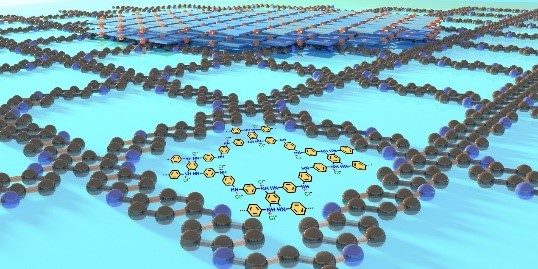
The multilayer-stacked 2D polyaniline crystal with unique metallic out-of-plane charge transport and high conductivity. [Photo provided to chinadaily.com.cn]
An international team of researchers has synthesized a multilayer-stacked two-dimensional polyaniline crystal, achieving unique metallic out-of-plane charge transport and high conductivity, according to the study published in Nature on Thursday.
Conducting polymers are celebrated for their electrical conductivity. They hold great promise as low-cost, lightweight, and flexible alternatives to traditional semiconductors and metals.
Despite their potential, charge transport efficiency, particularly between polymer chains, remains a key challenge limiting their performance and practical applications.
The researchers coming from the Ningbo Institute of Materials Technology and Engineering (NIMTE) of the Chinese Academy of Sciences (CAS) cooperated with international counterparts to achieve a novel 2DPANI crystal, using an anionic surfactant monolayer on the water surface.
The structure of the 2DPANI crystal enables strong in-plane conjugation and interlayer electronic coupling, the research article noted.
The synthesized conducting polymer demonstrated a high conductivity, while an anisotropic charge transport was also revealed.
Meanwhile, the vertical devices exhibited increasing conductivity at lower temperatures, a hallmark of metallic out-of-plane transport.
Such advancement in conducting polymer research addresses the limited charge transport issue caused by the insufficient structural ordering and electronic coupling, said Zhang Tao, a researcher at the NIMTE.
The study also provides insight into the three-dimensional metallic conductivity, unlocking new possibilities for electrodes, electromagnetic shielding, and sensors.